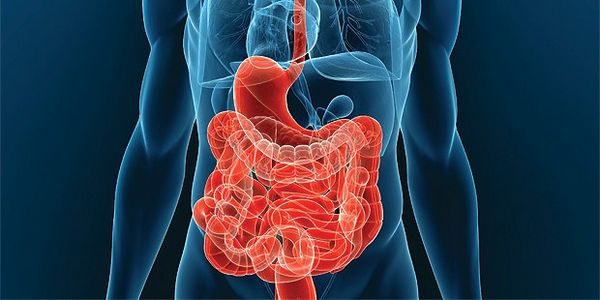Dysbacteriosis – treatment of disease. Symptoms and prevention of diseases of Goiter

Dysbacteriosis – What is this disease? Dysbacteriosis, According to the who recommendations (The World Health Organization), is not an independent disease.
This syndrome, that is a violation of the ratios of different types of microorganisms, located in the gut. Goiter occurs as a consequence of other diseases.
Dysbacteriosis – The cause of the
The most frequent cause of dysbacteriosis is the application of antibacterial drugs. The reason for the development of the disbiza of the bowel can also be long-term hormone therapy, intestinal infections, disease of digestive tract (pancreatitis, gastritis, gastroenteritis, colitis, cholecystitis), bad habits (smoking, alcohol abuse), unhealthy diet (insufficient number of plant fiber), strong stress, surgery, parasitic bowel disease, senium, premature babies. Goiter often accompanies immunodeficiency State, that arise during chemotherapy, HIV infection, some types of cancer.
Dysbacteriosis – Symptoms
The most characteristic symptoms of dysbacteriosis: disorders of stool (constipation, relief chairs, diarrhea), flatulence (flatulence), abdominal pain (often painless, raspirajushhaja, monotonic, sometimes-kolikoobraznaja, strong), feeling of fullness in the stomach, nausea, belching, eating disorders. Often develops during dysbacteriosis deficiency of vitamins and other bioactive substances. At deficiency of vitamins occur irritability, fatiguability, zaedy in the corners of the mouth, dryness of skin and mucous membranes, inflammation in the mouth and on the tongue. On the skin may develop inflammation, spoils the appearance of hair and nails. Often goiter accompanied by allergic reactions (chronic food urticaria).
Dysbacteriosis – Diagnostics
- bacteriological analysis (study of fecal microflora);
- biochemical express-method for the determination of the enzyme activity nadosadochnoj fraction of feces;
- ion chromatography;
- high-voltage electrophoresis on paper for the detection of β-aspartillizina, β-aspartilglicina, β-alanine, 5-aminovalerianovoj and γ-aminobutyric acid, etc.;
- gas-liquid chromatography;
- study of microflora in jejunal biopsy, taken during endoscopy studies.
Laboratory diagnosis is usually based on microbiological feces analysis. Microbiological criteria of a dysbacteriosis serve reduction bifidolaktobakterij, the emergence of strains with altered properties, increase or decrease the Escherichia, increase in the number of Staphylococcus, identification of conditionally pathogenic gram-negative sticks, mushrooms, clostridia.
Dysbacteriosis – Types of disease
- compensated dysbacteriosis of the intestine;
- subkompensirovannyj intestinal dysbacteriosis;
- Decompensated dysbacteriosis of the intestine;
Dysbacteriosis – Actions of the patient
The diet should include foods, ingredients which are assimilated to normal microflora, and help its recovery. They include, primarily, dairy products (clabber, kefir, cottage cheese, yogurt). The diet should be balanced protein-energy composition, be sure to include dietary fiber.
Excludes alcohol, smoked, spicy and fatty foods, products, augmentative fermentation processes in the gut: homemade pickles, confection, Sauerkraut.
Dysbacteriosis – Treatment of dysbiosis
In the first place, requires addressing causes of dysbacteriosis (treatment of the underlying disease, normalization of diet, rejection of harmful habits, etc.).
Treatment is drugs, which contain the bacteria, which lacks (Lactobacillus, bifidobacteria), such as, bifidumbacterin, etc. Appoint Prebiotics-drugs, conducive to the growth and reproduction of micro-organisms, forming part of the normal intestinal flora (lactulose).
Simultaneous use of substitute drugs digestive chemical reactions-enzymes, that we are normal microflora, and preparations, suppress the development of competitors microflora.
Antibacterial drugs applied in severe intestinal dysbacteriosis to destroy pathogenic flora (doxycycline, cefuroxime, ceftriaxone, metronidazol).
Antifungals (levorin) use cases, When the Kale identify yeast-like fungus Candida type.
In addition to the symptoms of dyspepsia apply gastric and intestinal digestive enzymes, sorbents (white coal, Activated carbon).
If necessary, designate vitamin-mineral complexes.
Dysbacteriosis – Complications of dysbacteriosis
- Chronic enterocolitis (chronic inflammation of the small and large intestine, that develops as a result of prolonged exposure to pathogenic intestinal flora).
- Deficiency of vitamins and/or trace elements in the body.
- Sepsis (develops by ingestion of pathogenic flora from the intestines into the blood).
- Peritonitis (develops due to the aggressive actions of pathogenic organisms in the gut with the destruction of all its layers and output of intestinal contents into the abdominal cavity).
- Reduce immune defence and joining other diseases.
- Inflammation of the digestive system (gastroduodenit, pancreatitis) as a result of the proliferation of pathogenic microorganisms.
- Weight reduction as a result of impaired digestion.
Dysbacteriosis – Prevention
Proper use of antibiotics plays the most important role in the prevention of dysbacteriosis. Antibiotics take strictly according to, Accordingly, the results of Bacteriological studies and antibiograms. When, When a prolonged antibiotic therapy, parallel apply Prebiotics, periodically monitor the status of intestinal flora.
For the prevention of dysbacteriosis recommended balanced diet, a rational mode of work and rest, timely treatment of diseases of the gastrointestinal tract, renunciation of bad habits.
